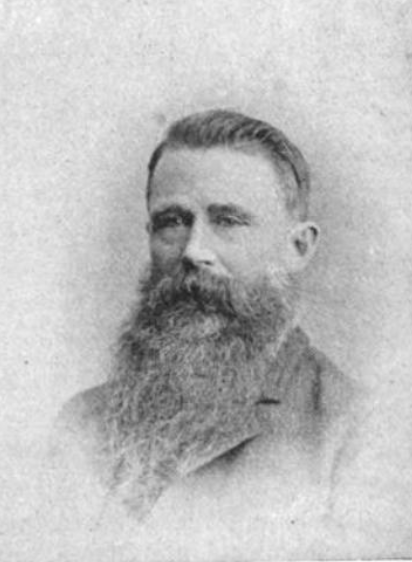Lyman A. Dickey
Lyman A. Dickey was born on October 20, 1840, in Southbridge, Vermont, to William and Phebe Dickey. His father was a teamster who owned $2,000 of real estate by 1850. He grew up in Boston, Massachusetts, and he moved to Manchester, New Hampshire, in the 1850s.
He moved to lowcountry South Carolina around 1860. According to a Manchester editor, he “had nothing to do with the institution of slavery—never spoke of it—but diligently attended to his own business.” He fell ill during the winter of 1860-61 and “wrote to his mother in Boston, sending his letter to the post office by a free negro.” The local Vigilant Committee intercepted the letter and “ordered [him] to leave the State of South Carolina as soon as [his] health will permit.” Fearing for his safety, he returned to Manchester soon afterward.
He enlisted in the Union army on May 22, 1861, and he mustered in as a private in Company I of the 2nd New Hampshire Infantry on June 7, 1861. According to his service records, he was 5 feet, 5 inches tall, with light hair and blue eyes. The regiment took part in the First Battle of Manassas, the Peninsula campaign, the Battle of Fair Oaks, the Second Battle of Manassas, the Battle of Fredericksburg, the Battle of Gettysburg, and the Battle of Cold Harbor.
He was devoted to the Union, writing in February 1862 that he was “as anxious for a fight With the traitors as I Was the day I gave myself to my Country to fight my countrys battles.” He added that, “if I fall for my country I ask no happier death.” He was wounded at Second Manassas on August 29, 1862, but he eventually recovered and rejoined the regiment. He was promoted to corporal on January 1, 1863, and then to sergeant on January 1, 1864. He mustered out on June 21, 1864.
He applied for a federal pension in June 1864 and eventually secured one. He returned to Manchester after leaving the army and resumed his work as a blacksmith. He married Emma A. Libbey on July 6, 1864, and they had at least three children: Nelson, born around 1867; William, born around 1871; and Carrie, born around 1874. His wife died in the 1870s, and he married Lana S. George on December 24, 1879. Their son George was born around 1880. They moved to Londonderry, New Hampshire, around 1887, and he worked as a farmer there. His wife died in the early 1900s, and he married a woman named Henrietta around 1908. He died in Londonderry on December 8, 1915.
Image: Lyman A. Dickey (Martin Alonzo Haynes, A History of the Second Regiment, New Hampshire Volunteer Infantry, in the War of the Rebellion)
DATABASE CONTENT
| (5114) | Dickey, Lyman A. | 1840-10-20 | 1915-12-08 |
- Conflict Side: Union
- Role: Soldier
- Rank in: Private
- Rank out: Sergeant
- Rank highest: Sergeant
- Gender: Male
- Race: White
Documents - Records: 4
People - Records: 2
Places - Records: 2
Regiments - Records: 1
- (346) [enlisted] [I] ~ 2nd New Hampshire Infantry
Groups - Records: 1
- (6) [member/supporter] ~ Grand Army of the Republic
SOURCES
1860, 1870, 1880, 1900, and 1910 United States Federal Censuses, available from Ancestry.com; New Hampshire Marriage and Divorce Records, 1659-1947, available from Ancestry.com; Civil War Soldier Records and Profiles, 1861-1865, available from Ancestry.com; General Index to Pension Files, 1861-1934, available from Ancestry.com; Hartford (CT) Courant, 25 January 1861; Lyman A. Dickey to Phoebe Dickey, DL0586.002, Nau Collection





